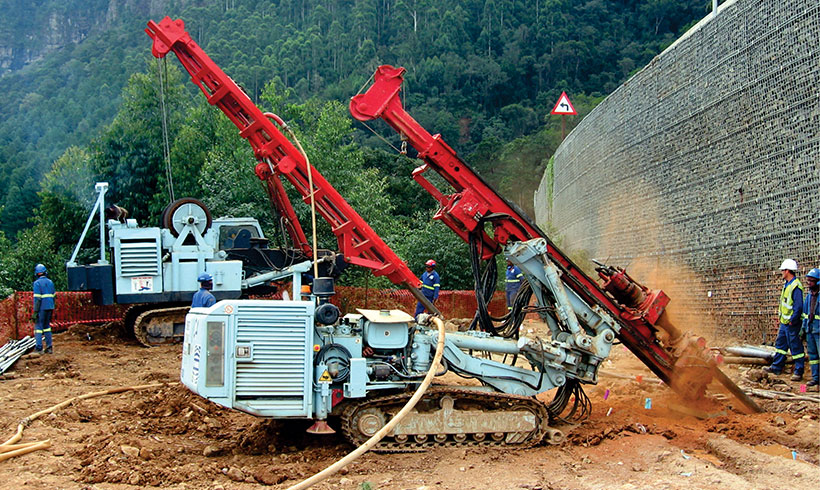Some Known Details About Geotechnical Engineering For Construction Projects
Some Known Details About Geotechnical Engineering For Construction Projects
Blog Article
All About Geotechnical Engineering For Construction Projects
Table of ContentsOur Geotechnical Engineering For Construction Projects StatementsThe Best Strategy To Use For Geotechnical Engineering For Construction ProjectsThe smart Trick of Geotechnical Engineering For Construction Projects That Nobody is DiscussingThe Ultimate Guide To Geotechnical Engineering For Construction ProjectsFascination About Geotechnical Engineering For Construction ProjectsHow Geotechnical Engineering For Construction Projects can Save You Time, Stress, and Money.
The function of geotechnical engineering considerably deals with recognizing the attributes of soil and rock, which may differ considerably by their density, wetness content etc. These attributes should be analyzed by geotechnical designers to anticipate their motions under various conditions. The security in addition to stability of frameworks are influenced by soil problems, making this analysis needed.A geotechnical designer will certainly take a look at soil to figure out the bearing capability of the planet and recommend correct structure types, such as superficial foundations, deep foundations like heaps, or specialized solutions like floating structures for soft dirts. Understanding the features and activities of soil and rock, along with just how they communicate with building and constructions that have actually been set up on or within them, is one of the primary explanations for why geotechnical engineering is essential.
In addition to architectural planning and building, geotechnical design is additionally important to the reconstruction and maintenance of pre-existing structures. Age-related deterioration or extra issues can affect a structure's stability and effectiveness. Ecological defense is accomplished with geotechnical engineering. Proficiency in air, water, and dirt top quality maintenance is put to make use of by geotechnical engineers to lessen the adverse effects of projects.
To sum up, geotechnical design is a vital technique that protects the durability and honesty of civil framework. Geotechnical engineers add to making building tasks reliable all over the world by understanding the behaviour of earth products and applying appropriate preparation methods.
How Geotechnical Engineering For Construction Projects can Save You Time, Stress, and Money.
By examining soil, rock, and subsurface conditions, geotechnical engineers offer crucial understandings that aid in the layout, building and construction, and upkeep of structures and framework.

The Geotechnical Engineering For Construction Projects Statements
Laboratory testing: Identifying the homes of soil and rock. Numerous top-level building jobs have effectively utilized geotechnical design to ensure their security and safety and security.
As a leader in geotechnical engineering, BECC Inc. is dedicated to delivering innovative and efficient services that satisfy the highest possible requirements of top quality and security. To learn more on how BECC Inc. can sustain your following building project, call us today and let us assist you improve strong ground.
William Rankine, a designer and physicist, developed an alternate to Coulomb's earth stress concept. Albert Atterberg established the clay uniformity indices that are still made use of today for dirt classification. In 1885, Osborne Reynolds acknowledged that shearing causes volumetric extension of dense materials and contraction of loose granular products. Modern geotechnical design is stated to have actually begun in 1925 with the magazine of Erdbaumechanik by Karl von Terzaghi, a mechanical engineer and geologist.
Our Geotechnical Engineering For Construction Projects Ideas
Terzaghi additionally created the structure for concepts of bearing capacity of foundations, and the concept for forecast of the price of settlement see this of clay layers due to loan consolidation. After that, Maurice Biot fully developed the three-dimensional soil combination concept, expanding the one-dimensional design previously developed by Terzaghi to extra basic hypotheses and introducing the collection of fundamental equations of Poroelasticity.
Geotechnical engineers investigate and identify the buildings of subsurface problems and materials.
The smart Trick of Geotechnical Engineering For Construction Projects That Nobody is Talking About
, which uses a thick-walled split spoon sampler, is the most common method to accumulate disrupted samples.

If the interface between the mass and the base of an incline has a complex geometry, slope stability evaluation is tough and numerical solution techniques are called for. Generally, the interface's exact geometry is unidentified, and a simplified interface geometry is assumed. Finite slopes call for three-dimensional versions to be examined, so most slopes are assessed thinking that they are definitely broad and can be represented by two-dimensional designs.
Getting The Geotechnical Engineering For Construction Projects To Work
The observational technique might be explained as adheres to: General expedition enough to establish the rough nature, pattern, and residential or commercial properties of down payments. Evaluation of the most possible conditions and the most unfavorable possible discrepancies. Producing the layout based on a functioning theory of behavior anticipated under one of the most potential problems. Choice of quantities to be observed as building proceeds and calculating their anticipated worths based on the working hypothesis under one of the most negative conditions.
Measurement of quantities and assessment of actual problems. Layout alteration per real problems The empirical approach appropriates for construction that has actually currently begun when an unexpected development occurs or when a failure or mishap looms or has actually already occurred. It is improper for projects whose design can not be changed during building.
Report this page